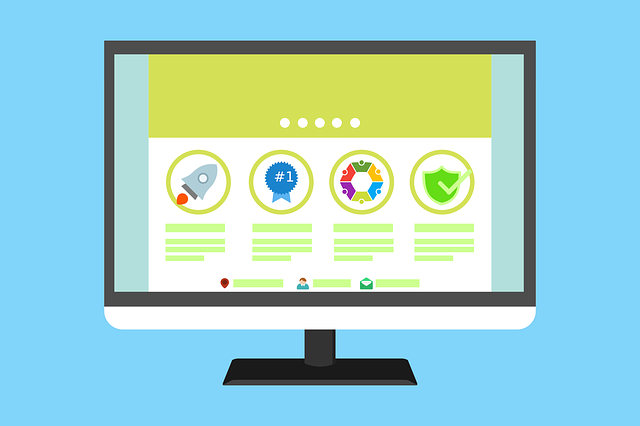Introduction
Data has an impact on your entire organization, whether it's lead generation, customer service, or internal communication. You can implement strategies to help you better understand your business with effective data analysis.
You can provide a frictionless customer journey by predicting customer behaviors, meeting their needs, and adding value to their lives with each interaction.
The delight a customer feels when a business exceeds their expectations will not only keep them coming back but will also turn them into an army of mini-marketers spreading the word about your company.
Our Blog post about Marketing Hub, Sales Hub, and Service Hub will be of help in this blog post.
Attract Stage Reporting

During the attract phase, you attract visitors with useful content and remove barriers that prevent them from learning about your company. This is the area in which your marketing team can truly shine.
The best marketing teams constantly experiment with new ideas and make use of data. Because marketing relies heavily on experimentation.
Marketing experiments are a low-cost way to see how new content ideas will work in your next campaign, which is critical for keeping your audience happy.
When teams start looking for shortcuts to success, the impact of experimentation is diminished.
And no marketing experimentation video would be complete without deconstructing the concept of growth hacking.
So, what’s growth hacking?
Experiments and processes designed to increase and retain a company's customer base.
In theory, growth hacking is fantastic.
Experimentation is one of the most effective ways for marketing teams to leverage their data.
Build your experiments using the scientific method.
Scientific Method
A method of experimenting that is used to investigate observations and answer questions is known as the scientific method.
The steps of the scientific method (particularly for marketing experiments) are as follows:
- Determine your goal.
- Create your hypothesis.
- Make a prediction.
- Create your experiment.
- Carry out your experiment.
- Analyze your research results.
Determining your goal
Always plan your marketing experiments with a specific goal in mind.
You should be able to summarize what you want to learn or the core business metric you want to improve in one sentence.
You can use SMART goals to find your goal.
Remember SMART goals are: Specific, Measurable, Attainable, Relevant, and Time-bound.
Creating a hypothesis
Your hypothesis is the foundation of your experiment.
This is because a hypothesis is how you will test your assumptions using qualitative data.
As a marketer, you'll most likely be testing assumptions about your users' or website visitors' behavior in this case.
As a starting point for your hypothesis, consider the following sentence:
We believe [present-tense assumption] because [supporting evidence].
Pro Tip: Your hypothesis should be based on a specific user problem at a specific point in time and from the perspective of the customer.
Making a prediction
A prediction is what you anticipate will occur if your hypothesis is correct. It is a conditional statement. One hypothesis can yield numerous predictions.
As a starting point for your prediction, consider the following sentence:
We can predict [result/metric] if we [experiment idea].
Creating an experiment
Examine the various assets on your website and come up with a design, wording, and layout alternatives. You could also experiment with email subject lines, sender names, and different ways to personalize your emails.
Keep in mind that even minor changes can result in significant improvements.
Although you will measure a variety of metrics for each test, choose one primary metric to focus on before running the test. Do it before you set up your "dependent variable" or "variant" to be tested.
Consider the following when designing your experiment:
- Does this experiment make any technical or operational assumptions?
- How will the findings of this experiment affect other areas?
- What built-in assumptions are potential influencing factors?
Carrying out the experiment
Running your experiment is simple if you've planned out what you want to test.
So it’s no need to explain this, it’s pretty simple.
Analyzing the results
You must increase the volume of traffic to your page to declare a winner with confidence in the statistical significance of the test.
By not touching your test, you can keep your data safe. You don't want to sabotage your results.
If something on the variant or control is broken (for example, the form submit button), fix it and restart the test. Otherwise, your data will be faulty.
Create a table for your team that summarizes each of your success metrics.
This could include metrics like page visits, emails delivered/open rate, form submissions, opportunities created, close rate, and influenced MRR, depending on your experiment.
Use the Scientific Method for your A/B Testing, CTAs, familiarizing your audience, etc.
Engage Stage Reporting

In the Engage stage, you make it simple for buyers to buy from you by allowing them to engage with you on their preferred timelines and channels. Your sales team here focuses on building relationships rather than closing deals.
The Engage stage cannot function without data. It's what allows you to personalize your email outreach for effective lead nurturing by segment, manage multi-channel communication (chat, phone, or messaging), and use lead-scoring to ensure you're reaching out to the best-fit prospects.
Sales Hub Forecasting and Analytics
Sales Hub has a plethora of reports to assist sales managers and other leaders in seeing the information they require. You've probably gathered some of these on your sales dashboard. In addition to your dashboards, there are two other reporting tools that you will want to use regularly as a sales leader.
Forecasting Tool
HubSpot's forecasting tool is ideal for your sales and service teams, whether you're tracking progress toward a goal, estimating where you'll end up this quarter, or looking for a home base for one-on-one meetings.
The forecasting tool is adaptable, powerful, and simple to use. With customizable forecast categories and models, you can tailor the tool to your specific business requirements.
Reps and managers can submit a custom forecast for the month or quarter using HubSpot's business forecasting tool. This forecast is then aggregated by the team to provide leadership with a complete picture of where their teams believe they will land. With forecast permissions, you have the control you need to ensure that forecast submissions come from the correct source.
The team rollup view provides sales and service managers with a high-level forecast that is broken down by team. Managers can then drill down into team performance to help their teams succeed.
Rather than manually exporting your deal data into spreadsheets to forecast multiple pipelines, use HubSpot's forecasting tool for a unified picture pulled directly from your CRM.
Sales teams can see monthly or quarterly revenue in real-time, while service teams can create their pipeline to track renewals and upgrade deals.
Along with at-a-glance performance metrics, HubSpot's forecasting tool integrates with sales analytics, providing you with in-depth insight into the performance of your team.
You're never far from the information you need to take your team to the next level with forecast categories, weighted sales pipelines, historical snapshots, and a plethora of other customizable filters.
Analytics Tool
Sales Hub also has a sales analytics page where you can dive deep into the metrics that matter most to your sales team.
The Sales Analytics tool contains the most relevant sales reports to assist sales managers and team members in better understanding how they are performing. These reports are generated based on the default deal properties and deal pipeline settings.
After customizing a report with this tool, you can save it or add it to a dashboard.
Analyzing Sales Content
Marketing content is created to pique prospects' interest and capture their attention. It is more general and practical, such as an informative blog post or infographic on an industry-related topic.
The sales content is more targeted. It is brand- or product-specific content intended to persuade prospects to buy.
And, yes, 'every minute a rep spends creating content is a minute they're not selling,' says the author. However, personalized content is critical for moving leads through the buyer's journey.
Many businesses' websites already have high-quality sales content. Reps can quickly find resources to share with leads by centralizing all existing sales content in one location.
But, how do you keep your library up to date?
Begin by organizing and analyzing the performance of your sales library using HubSpot's Sales Content Analytics tools.
After creating sales templates, sequences, and documents, you can use the Sales Content Analytics tool to evaluate their effectiveness.
If you like to understand more about Sales Hub, go through our previous blog post about Sales Hub
Delight Stage Reporting

During the delight phase, you assist, support, and empower customers to achieve their objectives.
Growing businesses recognize that the most cost-effective way to run a business today is to ensure customer satisfaction and success, which are both outcomes of customer success.
To make your customers happy, you must first understand what they expect from you. You must be aware of the current state of your customer experience.
Every business should collect and analyze customer feedback.
While customer sentiment can be measured in a variety of ways, one method is through Net Promoter Score (NPS).
With built-in customer loyalty surveys in HubSpot Service Hub, measuring NPS is relatively simple.
If you want to learn more about HubSpot Service Hub go through our previous blog post about Service Hub
You simply need to create a customer loyalty survey and distribute it to your customers. This type of survey can be sent via email or displayed on any webpage that has your HubSpot tracking code installed.
Sending NPS surveys to your customer base at least once every 90 days is a best practice for understanding general satisfaction.
Start collecting feedback from your customers if you aren't already. HubSpot conducts a formal NPS survey quarterly, but social media sentiment analysis is also a good place to start.
Determine your promoters and detractors, and look for commonalities.
Look for patterns among your customers.
Is there a common theme among your promoters and detractors in terms of industries, age groups, and verticals?
Usage metrics show how frequently your visitors and customers use your product or service.
This could include page views, downloads, memberships, or content subscriptions.
If your customers aren't interacting with your content, products, or services, it could be a sign of friction in their experience.
Inquire with your customer success teams.
Identify the most frequently asked questions with standard answers, such as pricing questions or password changes. Begin by making a simple page that answers these questions in the form of a FAQ. You can expand this into a more robust knowledge base site that is searchable and covers more areas of your product or service over time. This is content that can be repurposed and promoted by your marketing team.
Building Custom Reports

Clean up your data before creating your report. Before you get to that one perfect report, a lot can go wrong. If you haven't collected, connected, cleaned, and organized your data, you may find yourself in HubSpot's custom report builder with a lot of questions and no way to answer them.
Make certain you have reliable data. If you haven't already, you should invest in processes to ensure the quality and integrity of your data. This allows you to make informed business decisions while avoiding wasting money on low-quality data.
HubSpot assists you in collecting, connecting, and managing data from various sources.
The custom report builder visualizes this data, allowing you to identify what works, what doesn't, and where you can improve.
While there are numerous strategies for mastering this tool, it's best to build your custom report with the following ideas in mind:
- Research Question
- X and Y Axis
- Data Sources
Research Question
A good research question is essential because it keeps you focused and guides your choices in the builder. After all, when you first enter the custom report builder, you'll notice that you have a lot of options.
The tool's numerous levers ensure that you can report on a wide range of data sources. Great research questions share two characteristics.
First, the question should be linked to a business goal, key performance indicator, or core value. A report's purpose is to tell a story and advance the business. Consider "why" an audience might require the answer to this question.
Before entering the builder, craft questions that are as specific and intentional as possible. A report is not required for every marketing metric.
Second, your research question should include both an independent and a dependent variable.
To learn about them, go through Khan Academy as they’ll break it down the best.
X and Y Axis
If you haven't had to think about the x and y axes in a while, you're in luck. When creating your report, HubSpot provides call-outs and error messages to assist you in determining which data belongs on which axis.
When it comes to thinking about your independent and dependent variables, get granular. Consider which specific properties contain the information you're looking for.
Take the time, if necessary, to go over the HubSpot standard properties as well as any custom properties you may have in your portal. This will save you time when creating your report later on.
You've got your research question, which is fantastic! And you're almost there with mapping your x and y axes. It is now time to collect the necessary data.
Data Sources
You've probably heard the term "data source" used to describe the underlying data used in the new custom report builder. Let's break that down.
But, what exactly is a data source?
A data source is a collection of information that HubSpot collects for your company. Interaction data is also included in some of these (often called event data).
Contacts, Companies, Deals, Sales, Activities, Tickets, Products, Conversations, Feedback, Landing Pages, Website Pages, Blog, CTAs, Keywords, Campaigns, Social (which contains information about your Social Posts and Social Channels), Ads (which contains information about your Ads, Ad Accounts, Ad Campaigns), Marketing Email (which we just saw), and Video are currently available data sources to choose from.
Basics of Dashboard

If you're a HubSpot user, you've probably seen a dashboard.
A dashboard, however, is more than just a collection of random reports.
If you aren’t a HubSpot user, you might be wondering.
What’s a Dashboard?
A dashboard is an information management tool that visually tracks, analyzes, and displays key performance indicators (KPI), metrics, and key data points to monitor the health of a company, department, or process.
On the surface, they may appear to be a collection of graphs and charts but consider their lenses. They have access to every internal and external process that occurs in your company. They compile and simplify your data sources so that they are readable and centralized.
Dashboards simplify communication with your teams, managers, and stakeholders by displaying snapshots of various initiatives.
The key to creating an effective dashboard is to design with intent. How do you go about doing that?
- Starting with your audience
- Considering your Stakeholders
- Developing a Cadence
Starting with your audience
Another type of content is data and insights. Sure, there are more numbers and graphs involved, but the basic concept remains the same.
Consider your collaborators, team members, and stakeholders to be your reporting personas. They each play a unique role at your company.
That means their roadblocks and challenges, as well as their motivations and goals, will differ. These personas will require distinct content.
Understanding what type of data each person is interested in will help you prioritize what information to share and how frequently.
Considering your Stakeholders
These people could be executives, directors, or even your boss. Stakeholders at this level will be looking for information about the overall success of the company, a department, or your team.
Think about what these stakeholders care about, depending on your role in the company and to who you report. The procedure will be similar to that of creating content for a buyer persona.
To what numbers are they held accountable?
What teams do they lead, and where do they work?
Who do they collaborate with and to whom do they report?
Starting here will provide you with some insight into which metrics they may find most valuable.
If you've never worked with them directly before, send them a quick email, message, or schedule a meeting to align with their expectations and the type of information they'll need from you.
Developing a Cadence
A cadence is a rhythmic sequence of words or sounds.
Today, it can refer to almost any regular and consistent aspect of running a business. This is especially important when it comes to reporting.
Stakeholders at the decision-making level typically follow a cyclical business calendar. Stakeholders expect updates at key points throughout the month, quarter, or every three months), and fiscal year.
These timelines will serve as the foundation for your reporting cadence. Creating a dashboard to address these issues can help you save time in the long run. It will provide a centralized location for the information that this persona requires.
Setting this up early on will also ensure that you have enough time to provide a well-informed analysis that meets their needs every time.
It is up to you, as the dashboard creator, to analyze and manipulate your data. You've done the research; now it's time to analyze the results.
The true wealth of your reporting is the actionable insights you can provide to your audience.
Creating a visual hierarchy entails arranging and organizing elements in such a way that visitors are naturally drawn to the most important elements first.
This means using size, positioning, negative space, color, and contrast to help visitors identify the most important elements on a page in website design.
This means using the size, positioning, and color of your reports and widgets to draw your persona's attention to critical areas in dashboard design.
Conclusion
By using all these key takeaways you can ensure your customers have a frictionless customer journey while also keeping your team up to date and providing a frictionless customer journey.
By Attracting, Engaging, and Delighting your customers your Inbound Business will thrive!






.png)














 ebarak@inbouncy.com
ebarak@inbouncy.com Schedule a Meeting
Schedule a Meeting Ebarak Hossain
Ebarak Hossain
Submit Your Two Cents